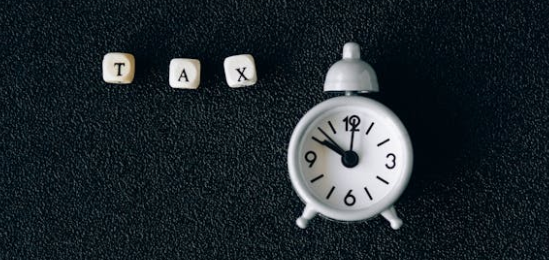You can get relief from taxes on private pension contributions, a maximum of up to 100% of your annual income. The tax relief on a pension is automatically offered, if not, you will have to claim it. It all depends on your pension scheme as well as the income tax rate you pay.
Keep reading as we cover the various facets of tax relief on pension contributions in the UK.
Understanding Tax Relief on Pension
Taxpayers need to make sure that their tax relief on pension contributions does not exceed 100% of their yearly earnings otherwise they will be required to pay the extra amount back to HMRC.
Pension relief on tax is one of the best features of pension savings for retirement. When you contribute to a pension, some of your funds that would otherwise have been paid as tax goes into your retirement savings. Thus, the tax amount you pay is less while you save for your future. Relief from taxes on pension contributions depends on the income tax rate you pay. It is important to remember that based on your pension scheme, you will be required to pay taxes to get relief. On the other hand, if you have not claimed tax relief on your scheme, you will have to claim extra tax relief on your pension.
Other than these, there are a few limits that can affect tax relief, and you need to be well-versed in these. When you go over these limits, you will have to pay an additional amount.
Which pensions qualify for tax relief?

Automatic tax relief on your pension contribution is available on two pension scheme types. Either –
- Your pension provider can seek relief at source at the rate of 20% from the government and then add it to your pension pot or
- Your employer takes into account the pension contributions at the workplace from your salary before making Income Tax deductions.
Note: If your applicable income tax rate in Scotland is 19%, the pension provider will, on your behalf, claim 20% as tax relief, though you will not be required to pay the difference.
You can also get tax relief on pension in the UK on certain overseas pension scheme contributions.
- Relief at source Relief from taxes
Be it your personal or stakeholder pensions, you can avail pension relief tax. In certain cases, you can get relief in workplace pensions, too.
To obtain tax relief, you need to ask your pension provider about it. Before starting the scheme, you will have to agree to certain declarations or conditions related to your contributions. The pension provider will offer you details on the same.
Please ensure that you provide your pension provider with full information about yourself, including your full name, address, date of birth, employment status (whether you are a full-time student, retired, a caregiver, or under 16 years old), and National Insurance number.
If you are a part of a workplace pension scheme, your employer may automatically get this done on your behalf. Your pension provider will ask you to authenticate your details, and you will need to do so within 30 days.
- Claiming tax relief on your own
In certain cases, you can claim pension relief tax on your own. It is applicable if –
- Your income rate is more than 20%, and your pension provider takes relief at source, i.e., claims relief on the first 20%.
- Your pension is paid by someone else.
- You have not set up your pension scheme for automatic tax relief.
If your payment exceeds £10,000, you will have to speak with HMRC for tax relief.
People in England, Wales or Northern Ireland with more than 20% income tax rate, you can use your Self Assessment tax return to claim extra tax relief.
Let’s understand this with an example. Suppose you are earning £60,000 in the 2024-25 tax year. Your tax is 40% on £10,000. The private pension amount of £15,000 comes with a tax relief at source on the full amount. With the help of your self-assessment tax return, you can get an additional 20% tax relief of £10,000. On the remaining £5,000 that you contribute to your pension, there is no additional relief.
If your income tax rate is more than 20% (Scotland)
If you are contributing to a private pension, you can get additional relief from taxes through a self-assessment tax return as follows –
- Up to any income taxed at 21%, relief of 1%
- Up to any income taxed at 42%, relief of 22%
- Up to any income taxed at 45%, relief of 25%
- Up to any income taxed at 48%, relief of 28%
If you are not using the Self Assessment tax return, you can contact HMRC.
If automatic tax relief is not set up for your pension scheme
In this case, you need to claim tax relief on your pension through the Self Assessment tax return. If you are not using the Self Assessment tax return, you can contact HMRC.
Note – you can claim relief only if the pension scheme is registered with HMRC.
If your pension is paid by someone else
Suppose your partner, spouse, or children pay for your pension. In this case, you will receive relief on pension tax at 20% automatically if the pension provider claims it on your behalf (relief at source).
In the case of a workplace pension where someone else is contributing, you will need to claim the relief on your own. It is best to contact HMRC with your query.
To submit or increase a claim over £10,000
In this case, you will need to write to HMRC for additional claims for contributions to pension beyond £10,000. In case your claim is over £10,00, you also need to write to HMRC to increase your existing claim by over 10%. If the claim increase is less than 10%, the same can be communicated to HMRC over the phone.
While writing to HMRC, make sure you include the following:
- Payment proof from your pension provider for each tax year you’re filing a claim for
- Whether the payment figures are before or after taxation
Send this letter to the HMRC’s Pay As You Earn and Self Assessment Team. Check the address at the official UK government website.
Tax relief if you don’t pay Income Tax

If you don’t pay Income Tax, you can still get tax relief at 20% on the first £2,880 you put into a pension each tax year (from 6 April-5 April) if:
- You don’t pay Income Tax, maybe because you have a low income.
- Your pension provider claims your tax relief at 20% (relief at source).
Life insurance policies
If you utilize your pension contributions for a personal term assurance policy, you can’t get tax relief. Protected policies are an exception here.
A personal term assurance is a kind of life insurance policy that either ends on the death of the first insured person or covers people from the same family.
Is there a maximum amount of tax relief I can get?
You can save as much as you want into your pensions each year, but there are rules about how much you can put in with tax relief before you might have to pay taxes.
Pension Contributions cannot Exceed Relevant UK Earnings.
First, any money you or someone else puts into your pension can’t be more than what you earn in the UK that year.
For example, if you earn £20,000 and add £25,000 to your pension (maybe from savings), tax relief only applies to the £20,000.
Similarly, if you earn £80,000 and want to put all of it into your pension in one year, tax relief usually applies only to £60,000.
These rules don’t affect what employers put into your pension.
The other limit is called the annual allowance.
The Annual Allowance (AA)
From the last tax year (2023-2024), the Annual Allowance (AA) for pensions is going up. This is the maximum amount you, your employer, or anyone else can contribute to your pension each year. It’s increasing from £40,000 to £60,000.
The rules are changing for higher-income individuals, too. The income level at which the Annual Allowance starts to decrease is going up from £240,000 to £260,000. Starting April 6th, if someone’s income exceeds £260,000, their Annual Allowance will decrease by £1 for every £2 their ‘adjusted income’ goes above this threshold, down to a minimum of £10,000 (previously £4,000). This is called a Tapered Annual Allowance (TAA).
Income that counts towards this includes your salary, employer pension contributions, pension payments, interest, dividends, and other income sources.
Money Purchase Annual Allowance (MPAA)
Additionally, if you start withdrawing flexible retirement income from a pension you’ve accumulated, your allowance for contributions to defined contribution pensions might be reduced to £10,000 in the current and upcoming tax years. It is called money purchase annual allowance.
Carry forward unused Annual Allowances
You can carry forward any Annual Allowance you haven’t used for the last three years. This allows you to make larger pension contributions if needed. But keep in mind the rules and thresholds from those earlier years will still apply, including any lower Annual Allowance rates and tapering thresholds.
The Lifetime Allowance (LTA)
There’s a limit on the total value of pension benefits you can build up throughout your lifetime (this includes private and employer pension schemes). This limit is known as the Lifetime Allowance and is currently £1,073,100. From April 2024, the government plans to completely abolish it, allowing people to contribute as much as they want to a pension scheme.
Learn how pension lifetime allowance can help you maximise your retirement savings.
Note: It should be noted that tax relief is available on relevant UK earnings up to the age of 75. After turning 75, contributions made to a pension no longer qualify for tax relief.
What Else You Need to Know About Pension Contributions & Tax Relief

Salary sacrifice arrangements
In a salary sacrifice setup, you and your employer agree that you’ll give up part of your salary. Instead, your employer puts that amount into your pension.
Since your employer is contributing, you don’t get extra tax relief. But because your salary is lower, you pay less Income Tax and National Insurance. This usually means more money in your pocket after taxes.
Plus, your employer pays less for National Insurance, too. Some might share those savings with you by adding more to your pension.
Personal Pension, SIPP, and Stakeholder Pension Schemes
In this case, the money you contribute usually comes from your income after taxes.
Your pension provider will claim back the basic rate tax (currently 20%) from HMRC on your contributions and add this amount to your pension fund. This process effectively increases your pension pot by the amount of tax reclaimed.
For example, if you contribute £80 to your pension, your provider will reclaim £20 from HMRC, making the total contribution into your pension pot £100.
Higher rate pension tax relief
For those who pay higher-rate tax, there’s an opportunity to claim additional tax relief at your higher rate directly from HMRC.
You can typically claim this through your self-assessment tax return or by contacting HMRC directly if you don’t usually file a tax return.
For instance, if you pay Income Tax at 40%, you could claim an additional £20 in tax relief. This means that a £100 contribution to your pension effectively costs you £60: £20 is claimed by your pension provider, and £20 is reclaimed through tax relief.
Contributing to Each Other’s Pensions: How Does It Work?
Depending on your pension type, it may or may not be possible for someone else to contribute.
Check with your pension provider or employer to verify if this option is available and how tax relief applies.
If you’re in a workplace pension, external contributions might not be feasible.
If you or someone else is in a personal pension—either self-set up or by an employer—external contributions (excluding from your employer) can usually be treated as your own. The pension provider will claim and add tax relief to your pension pot if permitted.
Additionally, higher-rate taxpayers can claim further relief.
Make sure you have sufficient UK earnings to cover the contribution amount, or tax relief may not apply to contributions exceeding £3,600 annually.
Tax Relief for Pension Contributions to Retirement Annuity Contracts
The provider usually does not automatically add tax relief to your pension pot.
Therefore, you must claim any tax relief you’re entitled to, including both basic rate and higher rate relief, directly from HMRC.
You can start this process by contacting HMRC directly or by including it in your tax return. Seek professional advice (if required).
Pension Accumulation Limits
There is no cap on how much you can accumulate in pensions.
The lifetime allowance, previously set at £1,073,100 until the 2023/24 tax year, was abolished in April 2024. Additionally, the excess charge was reduced to 0% for the 2023/24 tax year.
Regarding tax-free cash, also known as Pension Commencement Lump Sums (PCLS), it is typically limited to 25% of £1,073,100 (£268,275) unless you have existing lifetime allowance protection, now termed as the lump sum allowance.
Enrolment in the Pension Scheme
Every employer is now obligated to enroll all eligible workers into a pension scheme automatically.
This involves ensuring a minimum total contribution, which consists of contributions from both the employer and the worker, along with tax relief.
Conclusion
Planning your retirement is a crucial decision in one’s life. Therefore, you must have thorough knowledge and understanding of pension contributions and tax reliefs so you can make the most of them. Through this guide, we aim to provide as much knowledge as possible about tax relief on pension contributions. If you need professional assistance, contact expert accountants like TaxCan




